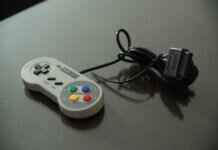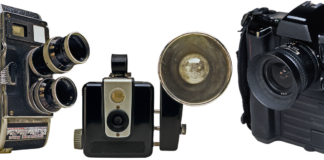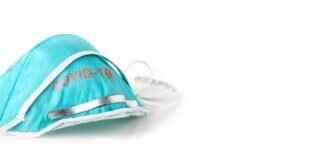This article embarks on a fascinating exploration of the diverse massage techniques found across Asia. Each method not only offers unique physical benefits but is also steeped in rich cultural significance. By delving into these ancient practices, we aim to provide a comprehensive understanding of their methods and advantages.
Asian massage techniques have roots that trace back thousands of years, often intertwined with traditional healing practices. These techniques have been preserved and adapted, reflecting the cultural heritage of the regions from which they originate. Understanding their historical contexts helps to appreciate their significance in modern wellness.
Traditional Thai massage is a holistic practice that combines elements of acupressure and yoga. This unique approach not only promotes relaxation but also enhances flexibility and mobility. The techniques used are deeply embedded in Thailand’s cultural identity, making this massage style a true art form.
- Stretching: Gentle stretching techniques help to improve flexibility.
- Rhythmic Compression: This technique alleviates tension throughout the body.
Breathwork is a vital component of Thai massage, facilitating relaxation and enhancing the effectiveness of the techniques employed. Practitioners emphasize the connection between breath and movement, creating a harmonious flow during the session.
- Improved Circulation: Enhances blood flow and oxygen delivery to tissues.
- Reduced Stress: Provides a calming effect on the mind and body.
Chinese massage, known as Tui Na, focuses on the body’s energy pathways, or meridians. By utilizing specific techniques, Tui Na aims to restore balance and harmony within the body, aligning with traditional Chinese medicine principles.
Tui Na is based on the flow of Qi (energy) and emphasizes the importance of meridian pathways in maintaining health. This holistic approach addresses both physical ailments and emotional well-being.
- Kneading: Relieves muscle tension and improves flexibility.
- Pressing: Targets acupressure points to alleviate pain.
Shiatsu massage, rooted in Japanese tradition, employs finger pressure on specific points to promote healing. This technique emphasizes the connection between mind and body, making it a profound practice for overall wellness.
The philosophy of Shiatsu is based on the belief that physical and emotional health are interconnected. By restoring balance through targeted pressure, practitioners can facilitate healing and rejuvenation.
- Thumb Pressure: Stimulates energy flow and alleviates various ailments.
- Palm Techniques: Provides deep relaxation and stress relief.
Balinese massage is a blend of various techniques, including acupressure and aromatherapy, creating a holistic experience that nurtures both body and mind. This practice reflects the cultural richness of Indonesia.
- Gentle Stretches: Promote relaxation and flexibility.
- Deep Tissue Techniques: Target chronic tension and stress.
Essential oils play a significant role in Balinese massage, enhancing the therapeutic effects and providing a sensory experience that calms the mind and invigorates the spirit.
Korean massage is often associated with the jjimjilbang (spa culture) and focuses on detoxification and relaxation through heat and pressure. This unique approach emphasizes the importance of self-care in Korean culture.
- Deep Tissue Pressure: Targets muscle knots and promotes relaxation.
- Heated Stones: Enhance circulation and soothe tense muscles.
Korean spas offer communal spaces for relaxation and rejuvenation, reinforcing the cultural belief in the importance of wellness and self-care.
Ayurvedic massage is rooted in ancient Indian healing practices, focusing on balancing the body’s energies through various techniques and herbal oils. This holistic approach is tailored to individual needs.
Based on the dosha system, Ayurvedic massage identifies individual body types and customizes treatments to restore balance and harmony.
- Abhyanga: An oil massage that detoxifies and promotes relaxation.
- Shirodhara: A treatment involving warm oil poured on the forehead to calm the mind.
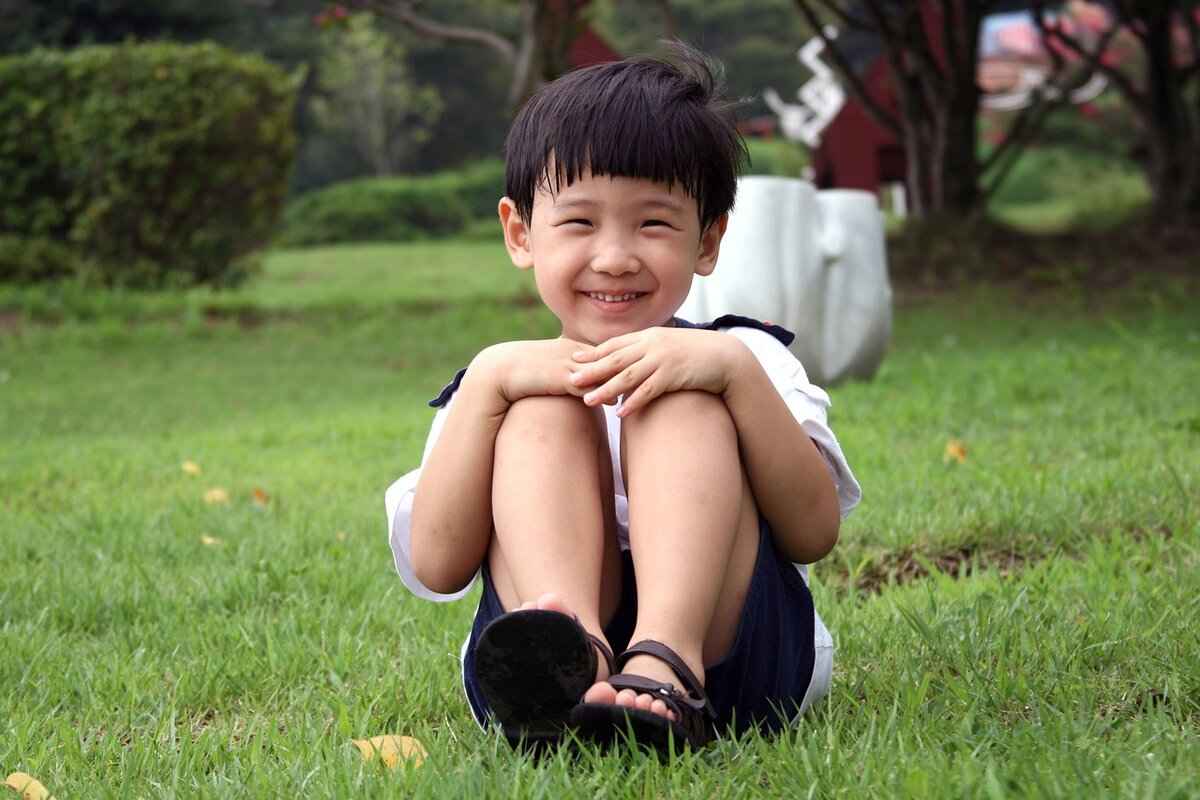
The Historical Roots of Asian Massage
Asian massage techniques have a rich tapestry of historical roots that reflect the cultural and spiritual traditions of various regions. These practices have not only evolved over centuries but have also been influenced by the philosophies and medicinal practices of their respective cultures. Understanding these origins offers insight into the profound significance of massage as a holistic approach to health and wellness.
The journey of Asian massage began thousands of years ago, with evidence of its practice found in ancient texts and artifacts. For instance, Chinese massage, known as Tui Na, dates back to the Han Dynasty (206 BC – 220 AD) and is deeply intertwined with the principles of traditional Chinese medicine. It emphasizes the flow of Qi (energy) through the body’s meridians, promoting balance and harmony.
Similarly, Indian Ayurvedic massage has its roots in the ancient Vedic texts, with practices aimed at balancing the body’s doshas—Vata, Pitta, and Kapha. This approach not only focuses on physical well-being but also incorporates spiritual healing, reflecting the holistic philosophy of Ayurveda.
In Thailand, the art of Thai massage emerged from the integration of Indian and Chinese influences, combining acupressure techniques with assisted yoga postures. This method not only provides relaxation but also enhances flexibility and energy flow, demonstrating the interconnectedness of body and mind.
Moreover, Japanese Shiatsu massage developed from traditional Chinese practices, emphasizing the importance of pressure points and energy pathways. Shiatsu practitioners believe that physical and emotional health are interconnected, which is a concept that resonates throughout many Asian cultures.
In conclusion, the historical roots of Asian massage techniques are a reflection of the diverse cultural landscapes from which they originate. Each technique carries its unique philosophy and method, yet all share a common goal: to foster wellness and harmony within the individual.
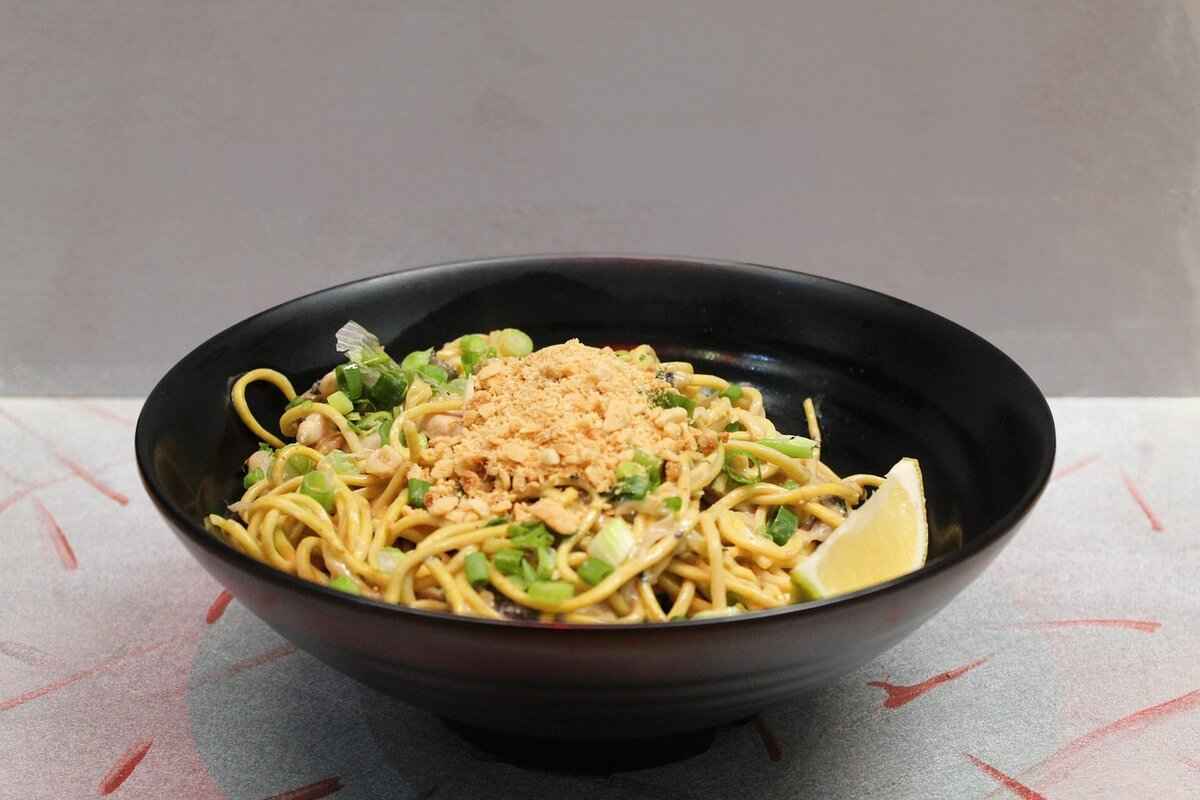
The Art of Traditional Thai Massage
The art of traditional Thai massage is a captivating practice that intertwines physical, mental, and spiritual elements, reflecting the rich tapestry of Thailand’s cultural heritage. This ancient form of therapy not only provides relaxation but also serves as a holistic approach to wellness, addressing both the body and mind. Unlike typical massage techniques, Thai massage is characterized by its unique combination of acupressure and assisted yoga postures, creating a dynamic experience that rejuvenates the entire being.
At the heart of Thai massage lies the principle of energy flow. Practitioners believe that the body has energy lines, or Sen lines, that must be kept open for optimal health. By applying pressure at specific points along these lines, therapists can help release blockages, allowing energy to flow freely. This practice not only alleviates physical tension but also promotes emotional balance and mental clarity.
One of the defining features of Thai massage is its use of stretching techniques. The therapist guides the recipient through various yoga-like postures, enhancing flexibility and range of motion. This aspect of Thai massage makes it particularly beneficial for athletes or anyone seeking to improve their physical performance. The rhythmic movements, combined with deep breathing, create a meditative state, further enhancing the therapeutic experience.
The ambiance in which Thai massage is performed also plays a crucial role in its effectiveness. Typically, a serene environment with soft lighting, calming music, and the scent of essential oils creates a tranquil atmosphere that allows clients to fully immerse themselves in the experience. This attention to detail underscores the cultural significance of the practice, as it is as much about the environment as it is about the techniques used.
In summary, traditional Thai massage is a profound practice that integrates physical manipulation with spiritual and energetic principles. It not only offers a pathway to relaxation and rejuvenation but also fosters a deeper connection between the body and mind, making it a truly holistic approach to wellness.
Techniques Used in Thai Massage
Thai massage is a profound practice that integrates a variety of techniques, each designed to promote relaxation, flexibility, and overall well-being. At its core, Thai massage employs a unique combination of **stretching** and **rhythmic compression**, which are essential for enhancing the body’s natural flexibility and relieving accumulated tension.
One of the hallmark techniques of Thai massage is **assisted stretching**. This method involves the practitioner guiding the recipient through a series of stretches that aim to open up the energy channels throughout the body. By leveraging body weight and gravity, the therapist can gently elongate muscles and improve joint mobility. This technique not only enhances physical flexibility but also encourages the flow of **Qi** (energy), fostering a sense of balance and harmony.
Another key element is the use of **rhythmic compression**. This technique involves applying pressure to specific points on the body, akin to acupressure. The rhythmic nature of this compression helps to stimulate blood circulation, alleviate muscle tension, and promote relaxation. The pressure is often applied using the palms, thumbs, elbows, or even feet, allowing for a deeply therapeutic experience that can target chronic pain areas effectively.
- Breath Coordination: Throughout the session, breathwork plays a crucial role. Practitioners encourage clients to synchronize their breathing with the movements, enhancing relaxation and the overall effectiveness of the techniques.
- Postural Alignment: The incorporation of yoga-like postures helps in aligning the body, which is vital for achieving optimal physical health and mental clarity.
In conclusion, the techniques used in Thai massage are not merely physical manipulations; they are a holistic approach to wellness that emphasizes the connection between body and mind. By exploring these methods, individuals can experience profound benefits that extend beyond mere relaxation, including improved flexibility, reduced stress levels, and a greater sense of overall well-being.
The Role of Breath in Thai Massage
In the realm of Thai massage, the significance of breathwork cannot be overstated. This ancient practice intertwines physical techniques with the art of breathing, creating a holistic experience that transcends mere muscle manipulation. Breath serves as the foundation for relaxation, enabling both the practitioner and the recipient to engage deeply with the therapeutic process.
During a Thai massage session, practitioners often guide their clients to focus on their breath, encouraging a state of mindfulness. This conscious breathing not only helps to ease tension but also enhances the effectiveness of the various techniques employed. By synchronizing breath with movement, the body becomes more receptive to stretching and pressure, allowing for a deeper release of stored tension.
- Enhancing Relaxation: Breathwork promotes a calm state of mind, which is essential for maximizing the benefits of massage. When clients are relaxed, their muscles soften, making them more pliable and responsive to the massage techniques.
- Improving Energy Flow: In Thai massage, the concept of energy flow is paramount. Breath is believed to be a conduit for life force or “prana.” By incorporating breathwork, practitioners can help balance and harmonize the client’s energy, facilitating better overall health.
- Facilitating Connection: The shared experience of breath between the practitioner and the client fosters a deeper connection. This bond enhances the therapeutic relationship, allowing for a more intuitive and responsive massage experience.
Moreover, breathwork is not just a tool for relaxation; it is also instrumental in preparing the body for the physical demands of Thai massage. As clients engage in deep, rhythmic breathing, they become more aware of their bodies, which aids in the release of tension and enhances flexibility.
In summary, the role of breath in Thai massage is multifaceted, serving as a catalyst for relaxation, energy flow, and connection. By integrating breathwork into each session, practitioners can significantly elevate the effectiveness of their techniques, transforming the massage into a truly rejuvenating experience.
Benefits of Thai Massage
Thai massage is a time-honored practice that has gained popularity worldwide due to its numerous benefits. This ancient technique not only promotes physical relaxation but also fosters a sense of mental well-being, making it a comprehensive approach to health.
One of the primary advantages of Thai massage is its ability to improve circulation. The combination of stretching and acupressure stimulates blood flow, which can lead to enhanced oxygen delivery to the muscles and organs. This increased circulation helps in the removal of toxins from the body, contributing to overall health.
Another significant benefit is the enhancement of flexibility. Thai massage incorporates assisted yoga-like stretches, which help in elongating the muscles and improving joint mobility. Regular sessions can lead to greater flexibility, making daily activities easier and more enjoyable.
In addition to physical benefits, Thai massage is renowned for its ability to reduce stress. The rhythmic movements and gentle pressure applied during the massage create a calming effect on the mind. This relaxation response can lower cortisol levels, promoting a sense of peace and tranquility.
Moreover, Thai massage can aid in pain relief. By targeting specific pressure points and muscle groups, it helps alleviate tension and discomfort, which can be particularly beneficial for those suffering from chronic pain conditions.
Lastly, the holistic nature of Thai massage emphasizes the connection between body and mind. It encourages mindfulness and body awareness, leading to a more balanced and centered state of being.
In summary, the benefits of Thai massage extend far beyond mere relaxation. With its ability to improve circulation, enhance flexibility, reduce stress, alleviate pain, and promote holistic wellness, it stands out as a valuable practice for anyone seeking to enhance their overall health.
The Environment of Thai Massage
The environment of a Thai massage studio is designed to create a serene atmosphere that promotes relaxation and healing. Upon entering, clients are often greeted by a warm and inviting space, where the decor reflects the rich cultural heritage of Thailand. Elements such as soft lighting and soothing music play a crucial role in establishing a tranquil ambiance, allowing individuals to leave their stress behind and immerse themselves in the experience.
Typically, the walls are adorned with traditional Thai art and symbols, enhancing the cultural authenticity of the studio. The use of natural materials, such as bamboo and wood, contributes to a calming environment, making clients feel more connected to nature. This connection is further emphasized by the presence of aromatic essential oils, which are often diffused throughout the space, creating a multi-sensory experience that promotes relaxation.
| Ambiance Elements | Purpose |
|---|---|
| Soft Lighting | Creates a calming atmosphere |
| Soothing Music | Enhances relaxation and mental clarity |
| Aromatic Oils | Stimulates the senses and promotes well-being |
Moreover, the layout of the studio is often open and spacious, allowing for a sense of freedom and movement. Each treatment area is usually separated by curtains or partitions, ensuring privacy while maintaining a communal feel. This design not only enhances the overall experience but also fosters a sense of community among clients, who may share in the healing journey together.
In conclusion, the environment of a Thai massage studio is meticulously curated to provide an oasis of peace. By integrating elements that appeal to the senses, practitioners create a holistic space that supports the physical and emotional benefits of Thai massage.
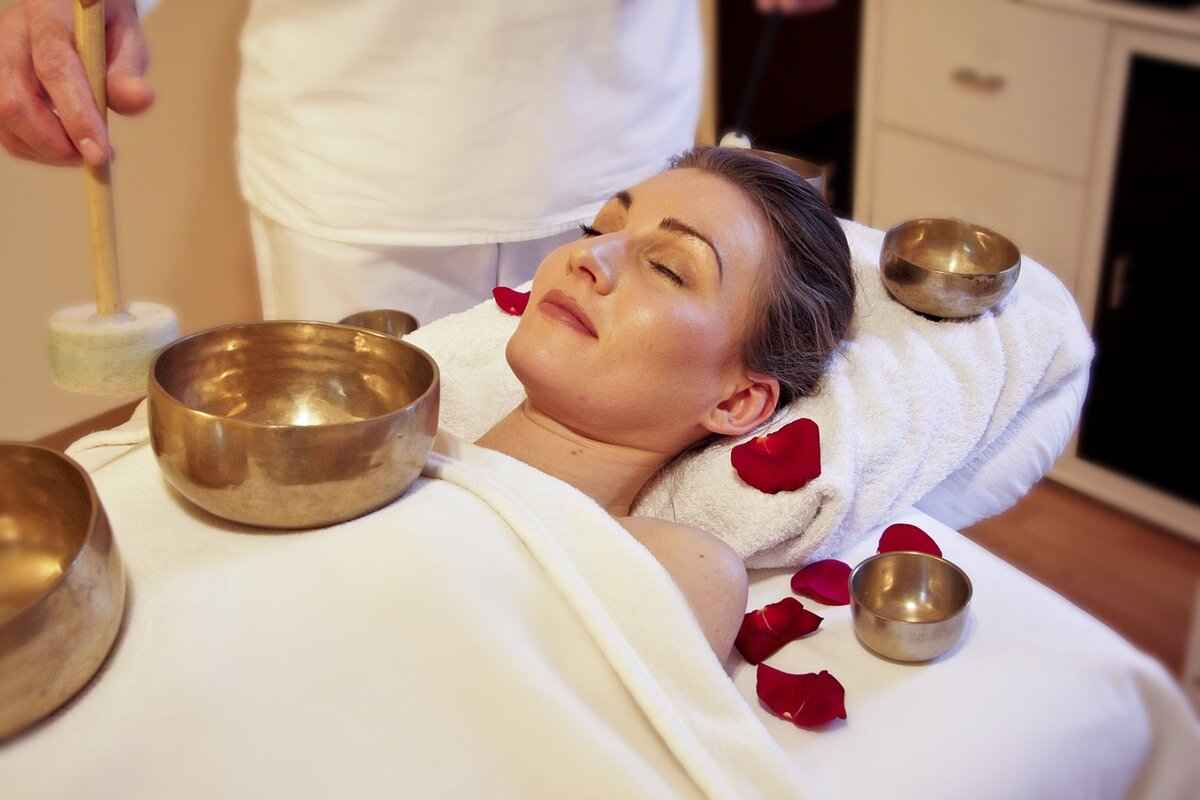
The Influence of Chinese Massage Techniques
Chinese massage, known as Tui Na, is a profound practice that is deeply intertwined with the principles of traditional Chinese medicine. This ancient technique emphasizes the importance of the body’s energy pathways, known as meridians, which are believed to be crucial for maintaining health and well-being.
At its core, Tui Na aims to restore balance and harmony within the body. It does so by manipulating the flow of Qi (pronounced “chee”), the vital life force that circulates through these meridians. Practitioners of Tui Na utilize various techniques to stimulate energy flow and address blockages that can lead to physical and emotional discomfort.
- Qi Flow: Central to Tui Na is the belief that optimal health is achieved when Qi flows freely throughout the body.
- Holistic Approach: Tui Na considers the whole person, addressing not only physical ailments but also emotional and psychological health.
- Preventive Care: Regular sessions can help prevent illness by maintaining balance within the body’s systems.
Tui Na incorporates a variety of techniques, each designed to target specific issues:
| Technique | Description |
|---|---|
| Kneading | Involves applying pressure to muscles and soft tissues to relieve tension. |
| Rolling | A technique that uses the hands to roll over the body, promoting relaxation and blood circulation. |
| Pressing | Targets specific acupressure points to alleviate pain and enhance energy flow. |
Incorporating Tui Na into wellness routines can lead to numerous benefits, such as reduced stress, improved circulation, and enhanced overall vitality. By focusing on the body’s energy pathways, Tui Na not only addresses current ailments but also promotes long-term health and well-being.
Key Principles of Tui Na
Tui Na, a form of Chinese therapeutic massage, is deeply rooted in the principles of traditional Chinese medicine (TCM). It focuses on the concept of Qi (pronounced “chee”), which is considered the vital energy that flows through the body. The health of an individual is believed to be directly linked to the smooth and balanced flow of Qi along the body’s meridian pathways.
The practice of Tui Na emphasizes the importance of these meridians, which are specific channels through which Qi circulates. When these pathways are blocked or imbalanced, it can lead to various physical and emotional ailments. Tui Na aims to restore harmony by manipulating the body’s soft tissues and stimulating these energy pathways.
Practitioners of Tui Na utilize a variety of techniques, including:
- Kneading: This technique involves applying pressure to specific areas to relieve tension and promote relaxation.
- Rolling: A gentle rolling motion is used to stimulate blood flow and enhance the flow of Qi.
- Pressing: Targeted pressure is applied to acupressure points, helping to alleviate pain and restore balance.
Moreover, Tui Na is not just a physical treatment; it also incorporates elements of diagnosis and holistic care. Practitioners assess the patient’s condition through observation, pulse diagnosis, and tongue examination to tailor the treatment to individual needs. This personalized approach ensures that each session addresses the unique imbalances present in the patient’s body.
In conclusion, Tui Na stands out as a comprehensive therapeutic practice that emphasizes the significance of Qi and meridian pathways in maintaining health. By restoring the natural flow of energy, Tui Na not only alleviates physical discomfort but also promotes overall well-being, making it a vital component of traditional Chinese medicine.
Common Techniques in Tui Na
In the realm of traditional Chinese medicine, Tui Na stands out as a holistic approach to healing and wellness. This ancient practice encompasses a variety of techniques that are designed to promote balance and harmony within the body, addressing both physical ailments and emotional well-being.
Practitioners of Tui Na employ a range of methods to achieve therapeutic effects. Among the most commonly used techniques are:
- Kneading: This technique involves applying pressure and circular motions to specific areas of the body. Kneading helps to relax tense muscles and improve circulation, making it particularly effective for relieving pain and stiffness.
- Rolling: Rolling motions are used to stimulate the skin and underlying tissues. This technique enhances blood flow and lymphatic drainage, which can aid in detoxification and promote overall vitality.
- Pressing: Pressing techniques focus on acupressure points along the body’s meridians. By applying targeted pressure, practitioners can help release blocked energy, or Qi, facilitating a smoother flow throughout the body.
- Stretching: Incorporating gentle stretches into a session can enhance flexibility and range of motion. This technique not only alleviates tension but also prepares the body for deeper work.
- Wringing: This technique involves a twisting motion that can help to release deep-seated tension in the muscles. Wringing is particularly beneficial for areas prone to stiffness, such as the neck and shoulders.
The integration of these techniques allows Tui Na practitioners to tailor each session to the individual’s specific needs, addressing a wide array of conditions from chronic pain to stress relief. As a result, Tui Na is not only a physical treatment but also a pathway to achieving emotional balance, making it a valuable component of holistic health practices.
Overall, the art of Tui Na exemplifies the profound connection between body and mind, offering a unique approach to wellness that has been cherished for centuries.
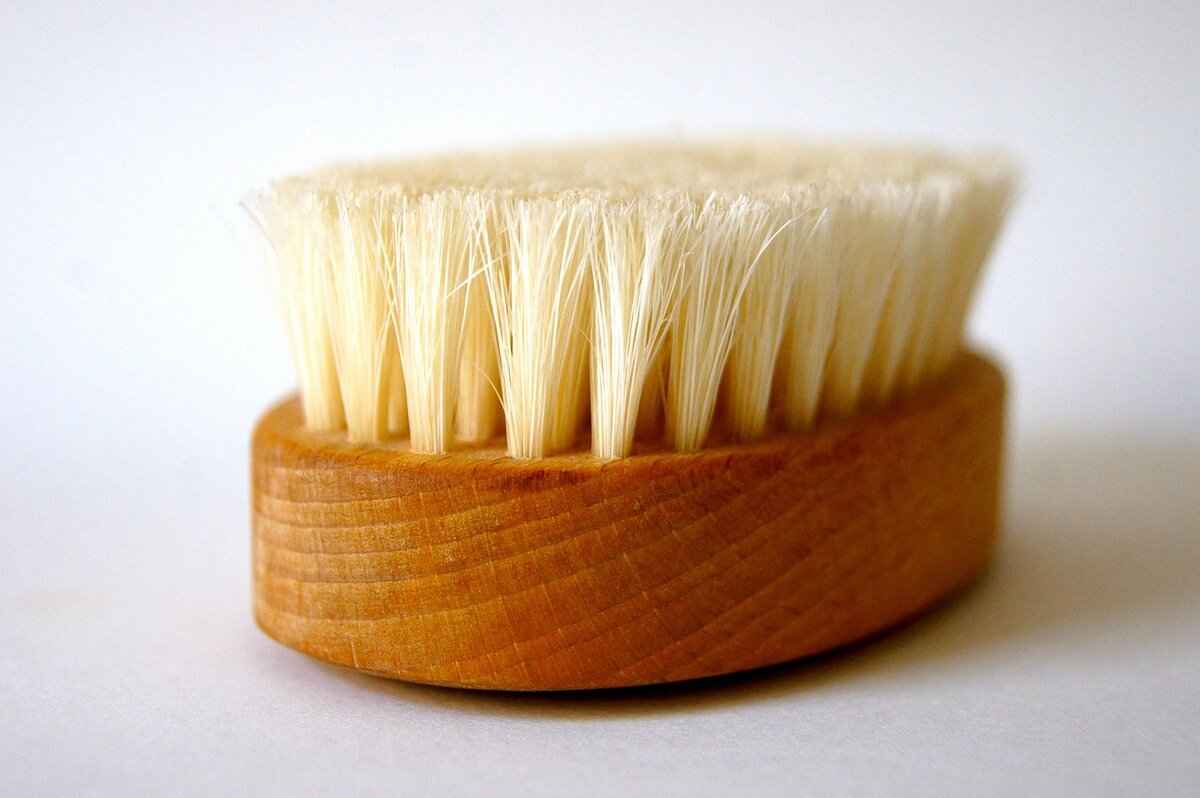
The Benefits of Japanese Shiatsu Massage
Shiatsu massage is a traditional Japanese therapeutic technique that focuses on promoting relaxation and healing through the application of finger pressure on specific points of the body. This ancient practice is deeply rooted in the philosophy that the mind and body are interconnected, and that achieving balance in one leads to harmony in the other.
Originating from the principles of traditional Chinese medicine, Shiatsu emphasizes the flow of Qi (energy) throughout the body. Practitioners believe that blockages or imbalances in this energy can lead to physical and emotional discomfort. By applying targeted pressure to key points, Shiatsu aims to restore the natural flow of energy, thereby promoting overall wellness.
Simplistic yet profound, Shiatsu employs a variety of techniques, including:
- Thumb and palm pressure: Used to stimulate acupressure points.
- Stretching: Gentle stretches help release tension in the muscles.
- Rotational movements: These aid in enhancing flexibility and circulation.
Each technique is designed to address specific ailments, such as chronic pain, stress, and fatigue. Regular sessions can lead to improved emotional balance and physical vitality.
The benefits of Shiatsu massage extend beyond mere relaxation. Research indicates that it can:
- Reduce levels of stress and anxiety.
- Improve circulation and promote detoxification.
- Enhance flexibility and range of motion.
- Alleviate symptoms of musculoskeletal pain.
In conclusion, Shiatsu massage serves as a holistic approach to health, addressing both physical and emotional well-being. By understanding its techniques and benefits, individuals can make informed choices about incorporating this enriching practice into their wellness routines.
The Philosophy Behind Shiatsu
delves into the intricate relationship between physical and emotional well-being, emphasizing the interconnectedness that is central to this traditional Japanese massage technique. Shiatsu, which translates to “finger pressure,” is grounded in the belief that harmony within the body can be achieved through precise and intentional pressure applied to specific points. This holistic approach not only addresses physical discomfort but also acknowledges the emotional states that can influence overall health.
At the core of Shiatsu is the concept of Qi (or “Chi”), the vital life force that flows through the body along designated pathways known as meridians. Practitioners of Shiatsu believe that blockages or imbalances in this energy flow can lead to physical ailments and emotional distress. By applying targeted pressure techniques, Shiatsu aims to restore this balance, promoting a sense of tranquility and well-being.
- Emotional Well-being: Shiatsu recognizes that stress and anxiety can manifest physically, and by addressing these emotional components, practitioners support mental health.
- Physical Health: Through the application of pressure, Shiatsu can alleviate tension, improve circulation, and enhance flexibility, contributing to overall physical health.
- Holistic Approach: This technique encourages a comprehensive view of health, where emotional and physical aspects are treated as one interconnected system.
Shiatsu techniques vary, including the use of thumbs, palms, and elbows to apply pressure, stretching, and joint manipulation. Each session is tailored to the individual’s needs, ensuring that both emotional and physical issues are addressed. The practice fosters a deep sense of relaxation, allowing individuals to reconnect with their bodies and emotions.
In conclusion, Shiatsu serves as a profound reminder of the vital connection between mind and body. By embracing this philosophy, individuals can embark on a journey toward improved health and emotional balance, making Shiatsu not just a treatment, but a pathway to holistic wellness.
Shiatsu Techniques and Their Effects
Shiatsu massage, a traditional Japanese healing practice, is renowned for its ability to promote relaxation and restore balance to the body. Utilizing a variety of techniques, Shiatsu focuses on applying pressure to specific points, known as tsubo, which correspond to the body’s energy pathways. This method is deeply rooted in the principles of traditional Chinese medicine, emphasizing the importance of Qi (energy) flow for overall health.
One of the most notable aspects of Shiatsu is its use of palm and thumb pressure. These techniques are designed to stimulate energy flow, alleviate tension, and address various physical ailments. The application of pressure can vary in intensity, allowing practitioners to tailor their approach based on individual needs. For instance, gentle pressure may be employed for relaxation, while deeper pressure can target chronic pain or muscle tightness.
In addition to palm and thumb pressure, Shiatsu incorporates a range of other techniques, including stretching and kneading. These methods not only enhance physical flexibility but also contribute to emotional well-being. By encouraging the release of pent-up stress and tension, Shiatsu fosters a sense of calm and tranquility.
The benefits of Shiatsu extend beyond mere relaxation. Regular sessions can lead to improved circulation, enhanced immune function, and reduced anxiety levels. Many practitioners and clients alike report experiencing greater mental clarity and emotional stability following treatment. As Shiatsu promotes the balance of both body and mind, it serves as a holistic approach to wellness.
In conclusion, Shiatsu techniques such as palm and thumb pressure are vital in stimulating energy flow and alleviating various ailments. By embracing these methods, individuals can enhance their overall wellness and cultivate a deeper connection between their physical and emotional health.
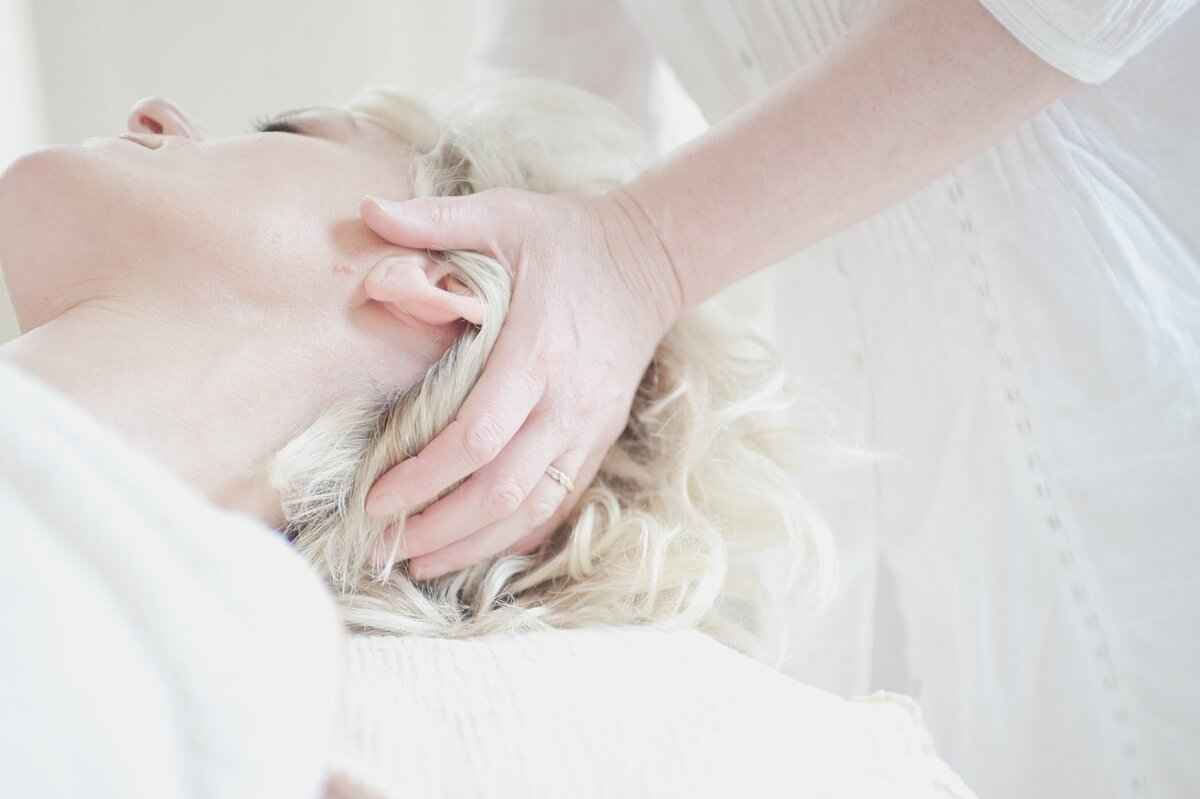
The Unique Aspects of Balinese Massage
Balinese massage is a unique and enriching experience that draws from various traditional techniques, creating a holistic approach to wellness. This form of massage is deeply rooted in the cultural practices of Bali, Indonesia, where it is often regarded as a spiritual and healing ritual. By integrating elements such as acupressure, aromatherapy, and gentle stretching, Balinese massage nurtures not only the body but also the mind, promoting an overall sense of well-being.
Balinese massage utilizes a combination of techniques that include:
- Long strokes: These movements help to relax the muscles and improve circulation.
- Gentle stretches: These are incorporated to enhance flexibility and release tension.
- Deep tissue techniques: Targeting specific areas of tension, these methods focus on deeper muscle layers.
The synergy of these techniques creates a deeply relaxing experience, allowing the recipient to reconnect with their body and mind.
Aromatherapy is a vital component of Balinese massage. The use of essential oils not only enhances the massage experience but also contributes to therapeutic benefits. Common oils used include:
- Lavender: Known for its calming properties, it helps reduce stress and anxiety.
- Eucalyptus: Often used for its refreshing scent, it promotes respiratory health.
- Ylang-ylang: This oil is believed to uplift mood and enhance relaxation.
The combination of skilled massage techniques with the soothing scents of essential oils creates a sensory experience that calms the mind and rejuvenates the spirit.
Engaging in Balinese massage offers numerous benefits, including:
- Enhanced relaxation: The holistic approach helps to relieve stress and promote tranquility.
- Improved circulation: The techniques used stimulate blood flow, aiding in overall health.
- Relief from muscle tension: Targeted pressure helps alleviate discomfort and tightness in muscles.
Overall, Balinese massage serves as a bridge between physical and mental wellness, making it a cherished practice both in Bali and around the world.
Techniques Employed in Balinese Massage
Balinese massage is a holistic therapy that draws from various techniques, creating a unique experience that promotes both physical and mental well-being. This traditional practice is deeply embedded in the cultural fabric of Bali, offering a blend of relaxation and rejuvenation.
One of the most distinctive features of Balinese massage is its combination of gentle stretches, long strokes, and deep tissue techniques. Each of these elements plays a crucial role in relieving tension and facilitating relaxation. The gentle stretches help to increase flexibility and improve circulation, while the long strokes promote a sense of calm and tranquility. Deep tissue techniques, on the other hand, target specific areas of tension, effectively alleviating knots and tightness within the muscles.
- Gentle Stretches: These movements are designed to enhance flexibility and range of motion, allowing the body to release pent-up stress.
- Long Strokes: The rhythmic application of long strokes encourages relaxation and helps to soothe the nervous system.
- Deep Tissue Techniques: Focused pressure on specific muscle groups aids in the release of chronic tension, promoting a deeper state of relaxation.
Additionally, the incorporation of aromatherapy further enriches the Balinese massage experience. Essential oils derived from local plants are often used, enhancing the therapeutic effects and creating a multi-sensory experience. The soothing scents not only calm the mind but also provide emotional balance, making the session more effective.
In summary, Balinese massage is not just about physical relief; it is a comprehensive approach to wellness that integrates various techniques to promote relaxation and harmony within the body and mind. Whether you are seeking to relieve stress or simply indulge in a moment of self-care, Balinese massage offers a transformative experience.
The Role of Aromatherapy in Balinese Massage
Aromatherapy is a crucial component of Balinese massage, enriching the overall experience through the use of essential oils. These oils, derived from various plants, are known for their therapeutic properties and play a vital role in enhancing physical and emotional well-being during the massage.
In Balinese massage, essential oils are carefully selected based on their aromatic qualities and therapeutic benefits. For instance, oils like lavender are often used for their calming effects, while lemongrass invigorates and refreshes the senses. The combination of these oils with traditional massage techniques creates a unique sensory experience that not only relaxes the body but also calms the mind.
The application of essential oils is not merely for fragrance; they possess properties that can help in reducing stress, promoting relaxation, and even alleviating certain physical ailments. When inhaled, the aromatic molecules interact with the brain, influencing mood and emotional state. This connection between scent and emotion is what makes aromatherapy a powerful tool in Balinese massage.
Furthermore, the ritualistic aspect of incorporating essential oils into the massage process adds to its cultural significance. Traditionally, Balinese massage practitioners have used these oils as part of their healing practices, which have been passed down through generations. This cultural heritage enhances the authenticity of the experience, allowing recipients to connect with the rich traditions of Bali.
- Enhances Relaxation: The soothing scents of essential oils help to lower stress levels.
- Promotes Emotional Balance: Certain oils can uplift mood and reduce anxiety.
- Physical Benefits: Oils like eucalyptus can alleviate muscle tension and pain.
In conclusion, the integration of aromatherapy into Balinese massage is not just an enhancement; it is a vital aspect that transforms the treatment into a holistic experience. By engaging the senses and connecting with the body’s natural rhythms, essential oils elevate the therapeutic effects of the massage, providing a profound sense of well-being.
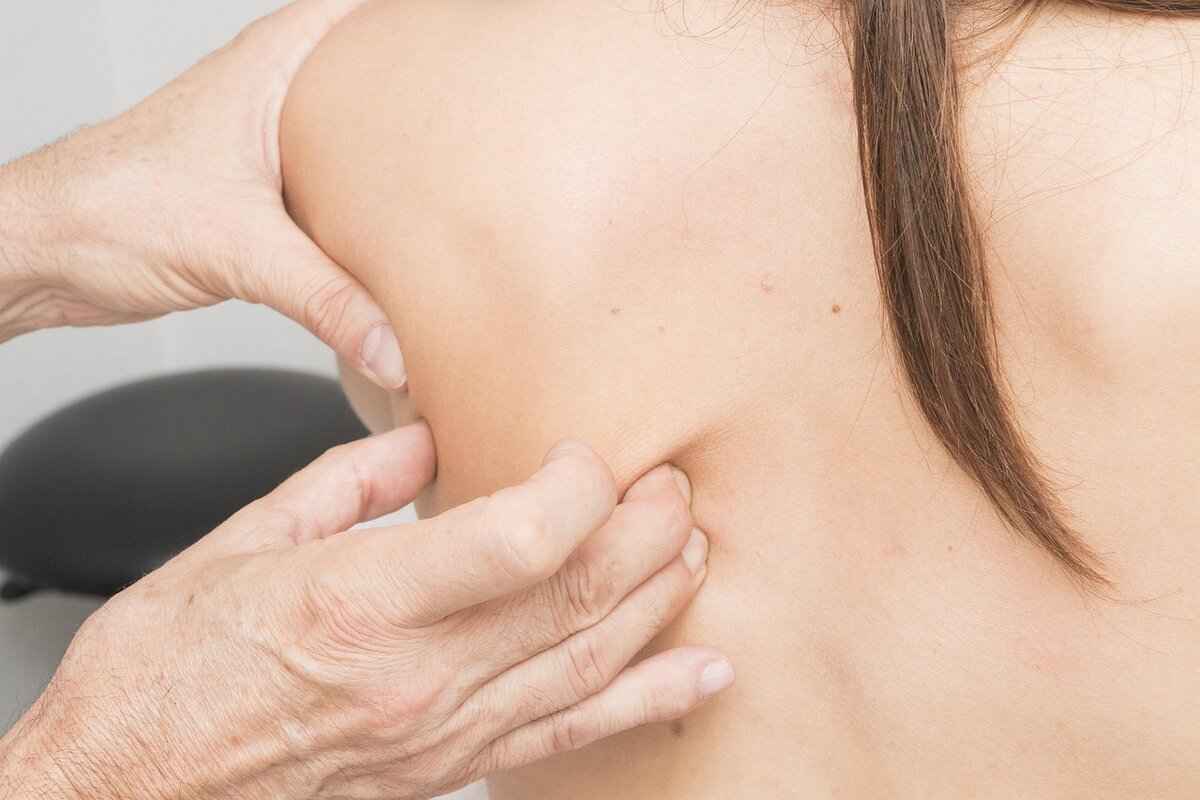
Exploring the Benefits of Korean Massage
Korean massage, deeply rooted in the country’s rich spa culture, particularly through the jjimjilbang experience, offers a holistic approach to wellness. This unique form of massage emphasizes detoxification and relaxation, utilizing a combination of heat, pressure, and traditional techniques that have been passed down through generations. The experience is not only about physical relief but also about fostering a sense of community and self-care.
Korean massage incorporates a variety of techniques designed to promote overall health. Some of the most notable methods include:
- Deep Tissue Pressure: This technique targets the deeper layers of muscle and connective tissue, effectively relieving chronic pain and tension.
- Heated Stones: The use of heated stones enhances circulation and provides a soothing sensation, making the massage experience more enjoyable.
- Scrubbing: Often performed in jjimjilbangs, this technique involves exfoliating the skin to improve blood flow and promote detoxification.
Korean spas serve as communal spaces where individuals can unwind and rejuvenate. They play a crucial role in Korean culture by emphasizing the importance of self-care and wellness. Visiting a jjimjilbang is often a social activity, where friends and family gather to relax and bond over therapeutic treatments.
The benefits of Korean massage extend beyond mere relaxation. Regular sessions can lead to:
- Improved Circulation: Enhanced blood flow contributes to overall health and vitality.
- Stress Relief: The combination of heat and pressure helps to alleviate stress and anxiety, promoting mental clarity.
- Detoxification: The scrubbing and deep tissue techniques aid in eliminating toxins from the body.
In summary, Korean massage offers a unique blend of traditional techniques and cultural significance, making it a valuable addition to the diverse landscape of Asian massage practices.
Techniques Used in Korean Massage
Korean massage, a significant aspect of Korean wellness culture, utilizes a variety of techniques designed to promote both physical and mental relaxation. One of the most notable methods is the application of deep tissue pressure, which targets the deeper layers of muscle and connective tissue. This technique is particularly effective for relieving chronic pain and muscle tension, allowing for a profound sense of relaxation.
Another hallmark of Korean massage is the use of heated stones. These stones are often placed on specific areas of the body to enhance the massage experience. The heat from the stones helps to increase blood circulation, relax muscles, and alleviate stress. This combination of heat and pressure not only promotes relaxation but also encourages the release of toxins from the body, enhancing overall well-being.
In addition to these primary techniques, Korean massage often incorporates elements of traditional practices such as acupressure, which involves applying pressure to specific points on the body to balance energy flow. This holistic approach ensures that the body is treated as a whole, addressing both physical ailments and emotional stress.
The environment in which Korean massage is performed, often within the serene setting of a jjimjilbang (Korean spa), further enhances the experience. These spas provide a tranquil atmosphere, complete with soothing music and calming scents, allowing individuals to fully immerse themselves in relaxation.
Overall, the techniques used in Korean massage reflect a deep understanding of the body’s needs, combining physical manipulation with elements of heat and energy work. This comprehensive approach not only promotes relaxation but also supports the body’s natural healing processes, making Korean massage a truly enriching experience.
The Cultural Significance of Korean Spa Treatments
Korean spa treatments, known as jjimjilbang, have become an integral part of South Korean culture, offering a unique blend of relaxation and social interaction. These spas serve as a communal space where individuals can unwind, rejuvenate, and connect with others. The emphasis on self-care and wellness in Korean culture is reflected in the various treatments and activities offered at these spas.
At a typical jjimjilbang, visitors can enjoy a range of facilities, including saunas, hot baths, and massage services. The experience often begins with a soak in a hot tub, followed by a visit to a sauna where the use of natural minerals and herbs promotes detoxification. This process is not only about physical cleansing but also about mental relaxation, allowing individuals to escape the stresses of daily life.
The communal aspect of jjimjilbang is significant. Families and friends often gather to enjoy these spaces together, reinforcing social bonds while promoting a sense of community. This practice aligns with the Korean belief that self-care should not be a solitary endeavor but rather a shared experience that fosters connection.
| Treatment | Benefits |
|---|---|
| Body Scrubs | Exfoliates skin, improves circulation |
| Hot Stone Massage | Relieves muscle tension, promotes relaxation |
| Herbal Baths | Detoxifies body, soothes the mind |
Furthermore, the philosophy of self-care in Korean culture extends beyond physical treatments. It encompasses a holistic approach to well-being, emphasizing the importance of mental health and emotional balance. By participating in spa treatments, individuals are encouraged to prioritize their health, which is vital in today’s fast-paced world.
In conclusion, Korean spa treatments are more than just a means of relaxation; they represent a cultural commitment to wellness and community. By embracing these practices, individuals can enhance their overall well-being while fostering connections with others, making jjimjilbang a vital aspect of Korean life.
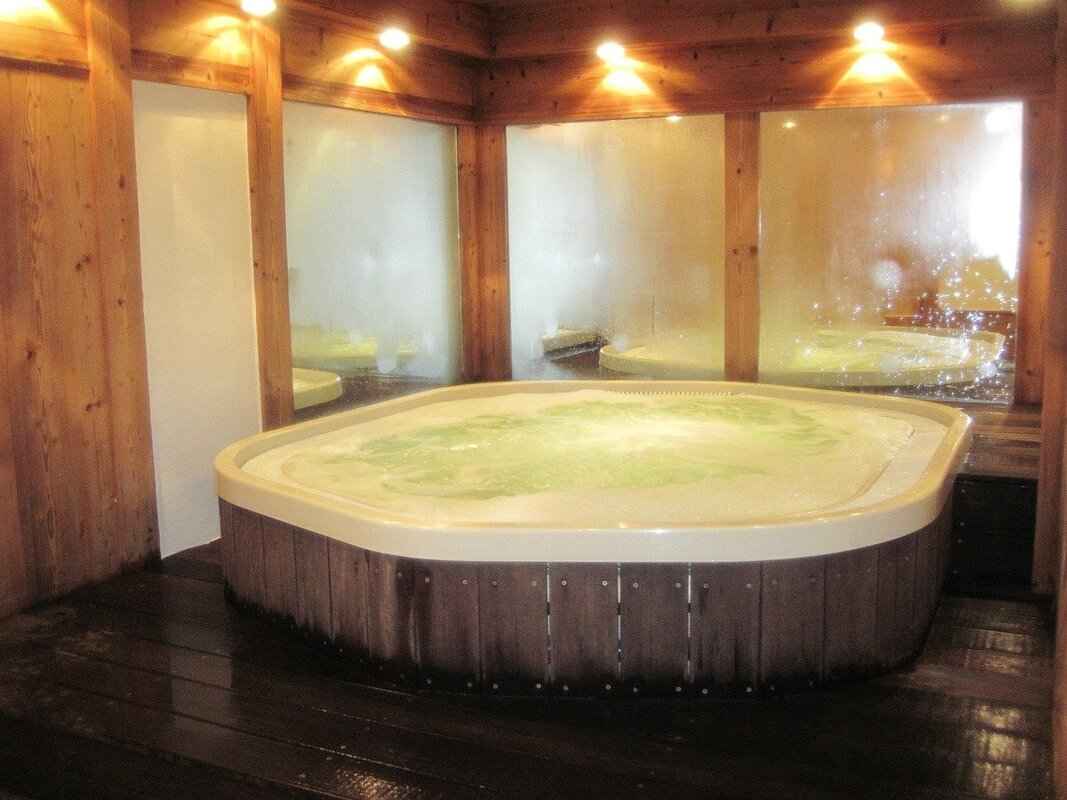
Understanding Indian Ayurvedic Massage
is essential for anyone interested in holistic healing practices. This ancient form of therapy, steeped in the traditions of Ayurveda, aims to restore balance and harmony within the body. It utilizes a variety of techniques and herbal oils, tailored to individual needs, to promote physical and emotional well-being.
The foundation of Ayurvedic massage lies in the dosha system, which categorizes individuals into three primary body types: Vata, Pitta, and Kapha. Each dosha represents different physical and emotional characteristics. By understanding one’s dosha, practitioners can customize treatments that effectively address specific imbalances. This personalized approach ensures that the massage not only relaxes the body but also aligns with the individual’s unique constitution.
- Abhyanga: This is a traditional oil massage that involves the application of warm herbal oils, promoting detoxification and relaxation. It enhances circulation and nourishes the skin.
- Shirodhara: In this technique, warm oil is poured continuously over the forehead, calming the mind and alleviating stress. It is particularly beneficial for those suffering from anxiety and insomnia.
- Pinda Sweda: This involves the use of heated herbal poultices, which are applied to the body to relieve muscle tension and improve joint mobility.
Herbal oils are a crucial component of Ayurvedic massage, each selected for its specific properties. For instance, sesame oil is often used for its warming qualities, while coconut oil is favored for its cooling effects. These oils not only enhance the massage experience but also provide therapeutic benefits, such as nourishing the skin and promoting circulation.
Ayurvedic massage offers a plethora of benefits, including:
- Stress Reduction: The calming techniques help to alleviate stress and promote mental clarity.
- Improved Circulation: The massage techniques enhance blood flow, which is vital for overall health.
- Detoxification: The use of herbal oils aids in the elimination of toxins from the body.
- Enhanced Flexibility: Regular sessions can improve joint mobility and flexibility.
In conclusion, Ayurvedic massage is a profound practice that not only addresses physical ailments but also nurtures the mind and spirit. By embracing its principles and techniques, individuals can embark on a journey toward holistic health and wellness.
Principles of Ayurvedic Massage
Ayurvedic massage is a therapeutic practice deeply rooted in the ancient Indian system of Ayurveda, which emphasizes the balance of mind, body, and spirit. The core principle of Ayurvedic massage revolves around the dosha system, a unique framework that categorizes individuals into three primary body types: Vata, Pitta, and Kapha. Each dosha represents different physical and emotional characteristics, and understanding one’s dosha is crucial for tailoring effective treatment.
By identifying an individual’s dosha, practitioners can customize massage techniques and herbal oils to restore balance and promote overall well-being. For instance, Vata types, often characterized by dryness and coolness, may benefit from warm, nourishing oils and gentle strokes to ground and stabilize their energy. In contrast, Pitta types, who tend to be fiery and intense, might require soothing techniques and cooling oils to calm their overstimulated systems. Kapha types, known for their stability and strength, may find revitalizing techniques and invigorating oils beneficial to stimulate circulation and energy.
The techniques used in Ayurvedic massage vary widely, but they often include Abhyanga, a full-body oil massage that promotes detoxification and relaxation. This technique not only nourishes the skin but also enhances lymphatic drainage, supporting the body’s natural healing processes. Another common method is Shirodhara, where warm oil is poured gently over the forehead, calming the mind and promoting deep relaxation.
Ultimately, Ayurvedic massage is not just about physical manipulation; it encompasses a holistic approach that considers emotional and spiritual health. By aligning treatments with the individual’s unique constitution, Ayurvedic massage fosters a profound sense of harmony and vitality, making it a transformative experience for those seeking balance in their lives.
Common Techniques in Ayurvedic Massage
Ayurvedic massage is a cornerstone of traditional Indian healing practices, focusing on the holistic balance of the body, mind, and spirit. Among the various techniques employed, Abhyanga stands out as a foundational practice that promotes detoxification and relaxation.
Abhyanga is a traditional Ayurvedic oil massage that involves the application of warm herbal oils to the body. This technique is not just about relaxation; it serves multiple therapeutic purposes:
- Detoxification: The warm oil helps to draw out toxins from the body, aiding in their elimination through the skin.
- Improved Circulation: The massage techniques used in Abhyanga stimulate blood flow, enhancing the delivery of nutrients to tissues.
- Stress Relief: The rhythmic strokes and soothing oils promote deep relaxation, reducing stress and anxiety levels.
Practitioners utilize a variety of techniques during an Abhyanga session, including:
- Long, sweeping strokes to cover larger muscle groups- Circular motions around joints to relieve tension- Gentle kneading to stimulate lymphatic drainage
Each technique is designed to engage the body’s energy pathways, or nadis, facilitating a flow of prana (life energy) throughout the body.
Incorporating Abhyanga into a regular wellness routine can yield numerous benefits:
- Enhanced Skin Health: The nourishing oils hydrate the skin, improving its texture and appearance.
- Increased Energy Levels: Regular practice can rejuvenate the body, leaving individuals feeling more energized.
- Emotional Balance: The calming nature of the massage promotes mental clarity and emotional stability.
In conclusion, Abhyanga is more than just an oil massage; it is a profound practice that embodies the principles of Ayurveda, offering a pathway to holistic well-being.
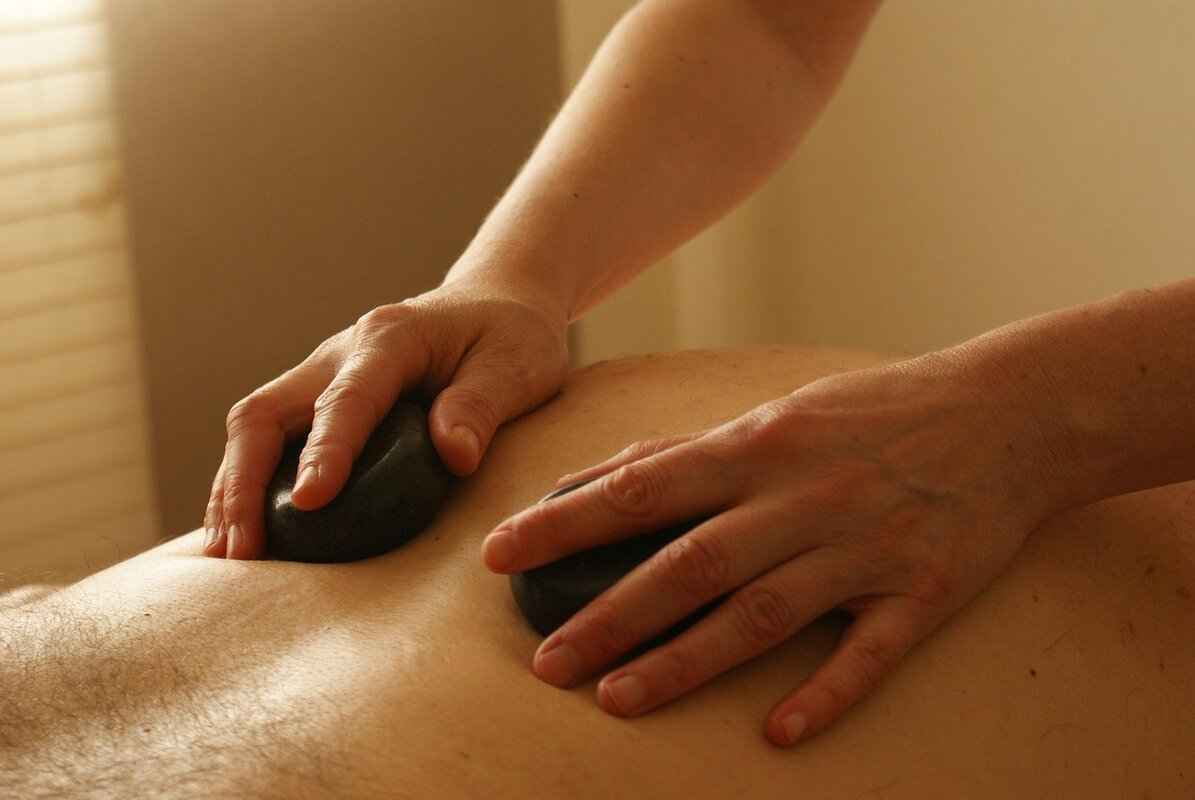
Conclusion: Embracing Diversity in Asian Massage Techniques
The diversity of massage techniques found across Asia is a testament to the region’s rich cultural tapestry, with each method offering unique benefits that cater to both physical and mental well-being. From the ancient practices of traditional Chinese medicine to the serene techniques of Balinese massage, these therapies not only enhance relaxation but also promote healing and balance within the body.
Each culture has developed its own distinct approach to massage, influenced by historical practices, spiritual beliefs, and environmental factors. For instance, Thai massage integrates yoga-like stretches and acupressure, deeply rooted in Thailand’s cultural heritage, while Shiatsu from Japan emphasizes the connection between mind and body through targeted pressure points.
Moreover, Korean massage often takes place in communal spa settings, highlighting the importance of social interaction and self-care within Korean culture. Similarly, Ayurvedic massage in India focuses on balancing the body’s energies with personalized treatments tailored to individual doshas, showcasing a holistic approach to health.
The techniques employed in these massages vary widely, from the rhythmic compression of Tui Na to the soothing strokes of Balinese massage, each designed to alleviate stress, improve circulation, and enhance overall vitality. Furthermore, the integration of aromatherapy in practices like Balinese massage adds another layer of sensory experience, promoting relaxation and mental clarity.
In summary, the variety of massage techniques across Asia is not merely a collection of methods; it is a reflection of the region’s cultural heritage and a celebration of diverse healing philosophies. By embracing these practices, individuals can experience profound benefits that extend beyond the physical, fostering a deeper connection to their overall well-being.
Frequently Asked Questions
- What are the main benefits of Asian massage techniques?
Asian massage techniques offer a variety of benefits, including improved circulation, enhanced flexibility, reduced stress, and overall wellness. Each technique, whether it’s Thai, Chinese, or Ayurvedic, has unique methods that target different aspects of health and relaxation.
- How do I choose the right type of massage for me?
Choosing the right type of massage depends on your personal needs and preferences. If you’re looking for deep relaxation, Thai or Balinese massage might be ideal. For pain relief and balance, consider Tui Na or Shiatsu. It’s always a good idea to consult with a therapist about your specific concerns.
- Are Asian massage techniques safe for everyone?
While most Asian massage techniques are safe, certain conditions may require caution. Pregnant women, individuals with certain medical conditions, or those recovering from injuries should consult a healthcare professional before receiving any type of massage. Always communicate your health history with your therapist.
- What should I expect during a massage session?
During a massage session, expect to be in a calm and relaxing environment. The therapist will typically discuss your needs and preferences before starting. You may experience various techniques, from gentle stretches in Thai massage to deep pressure in Shiatsu, all aimed at promoting relaxation and healing.
- How often should I get a massage?
The frequency of massages depends on your personal goals and lifestyle. For stress relief and relaxation, a monthly session might be beneficial. If you’re dealing with specific pain or tension, weekly or bi-weekly visits could be more effective. Listen to your body and adjust as needed!



